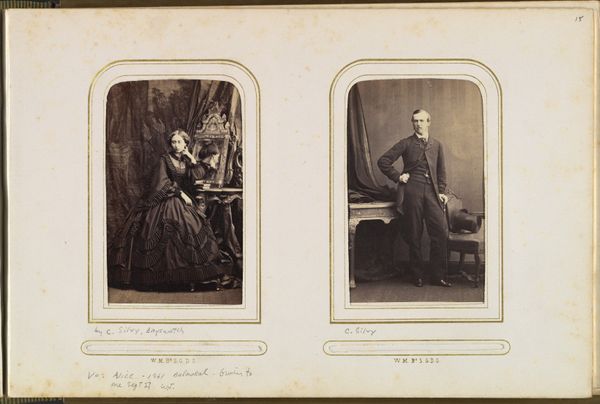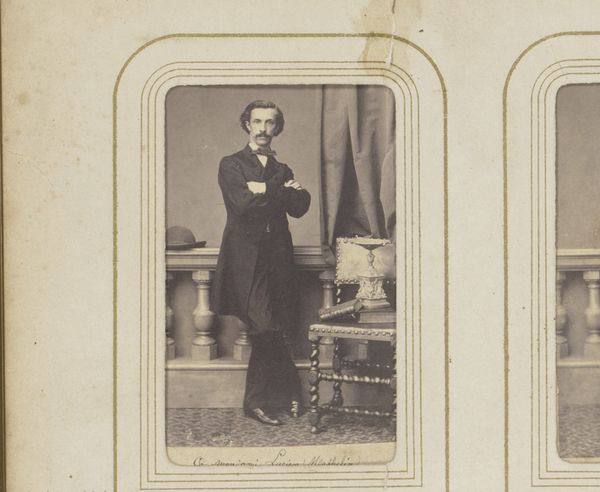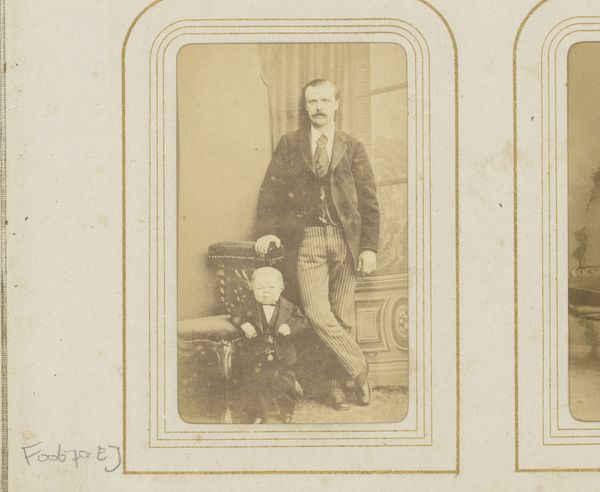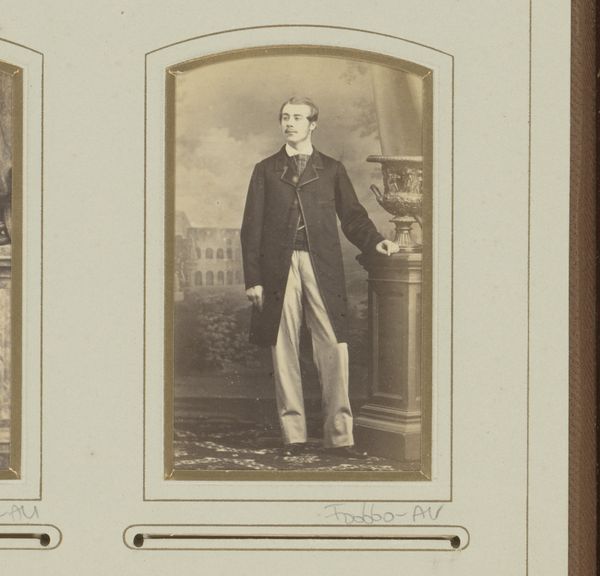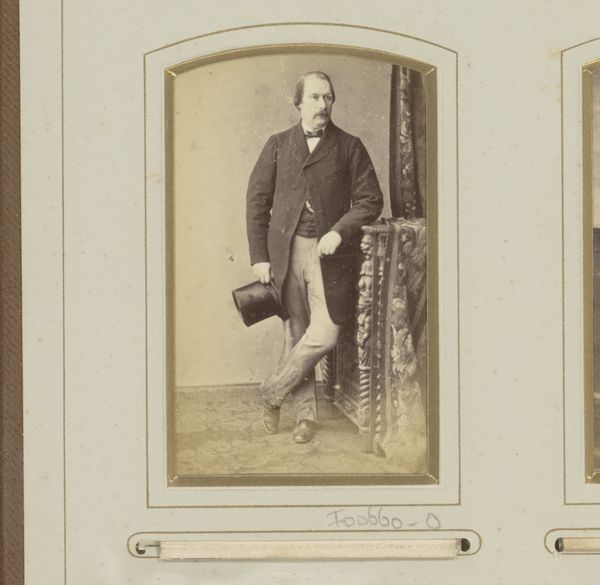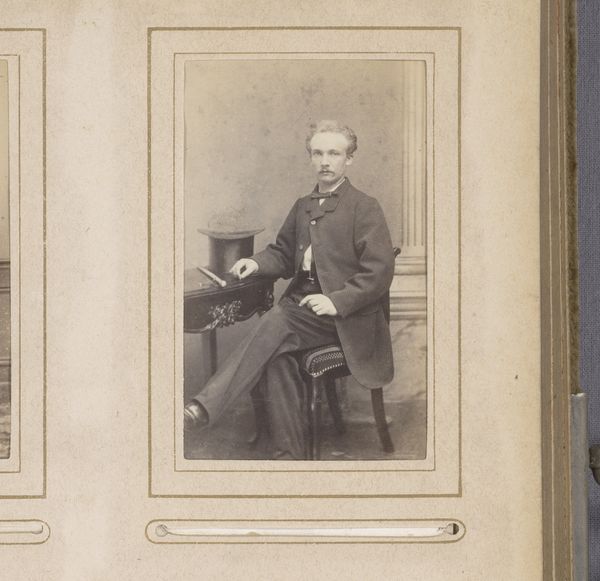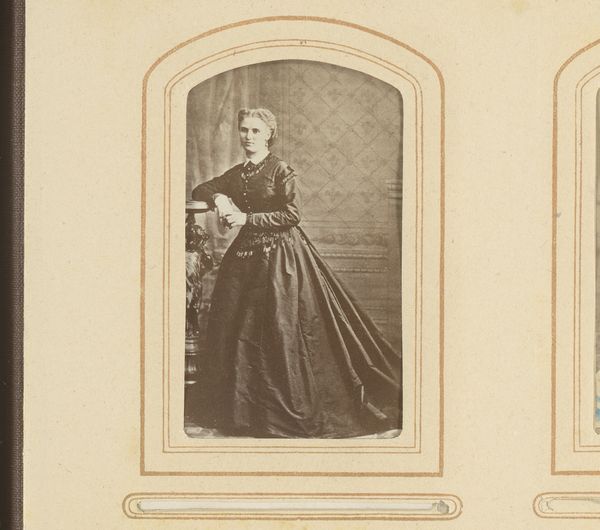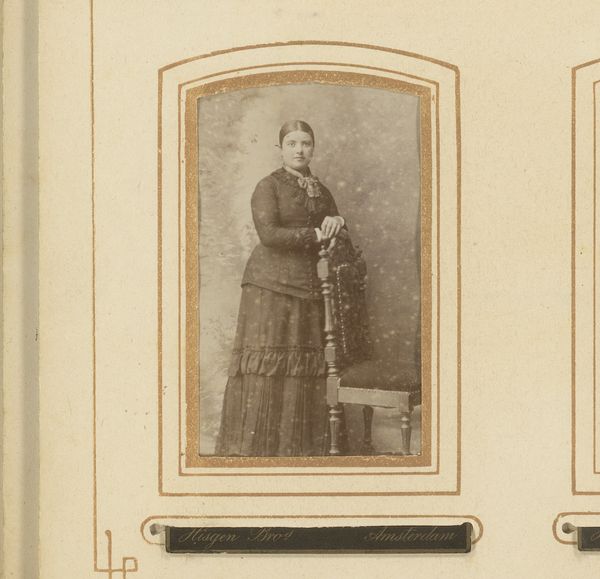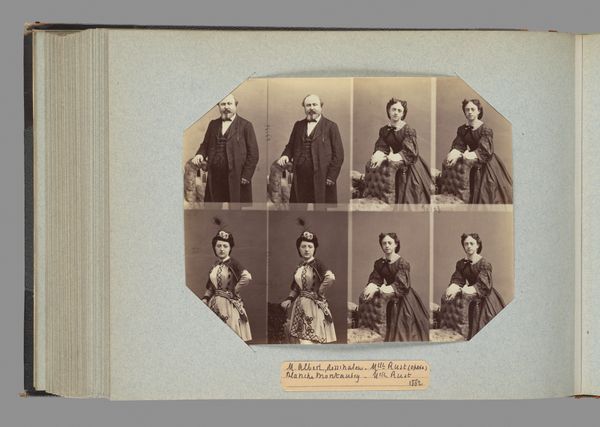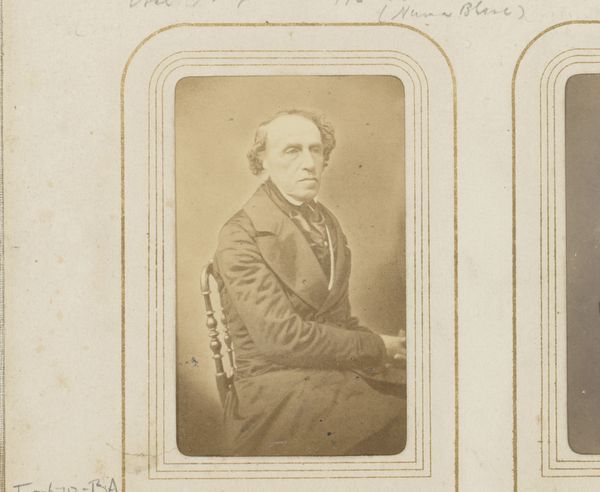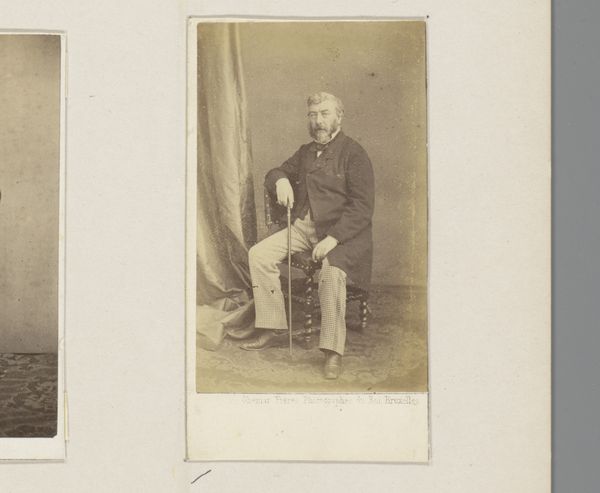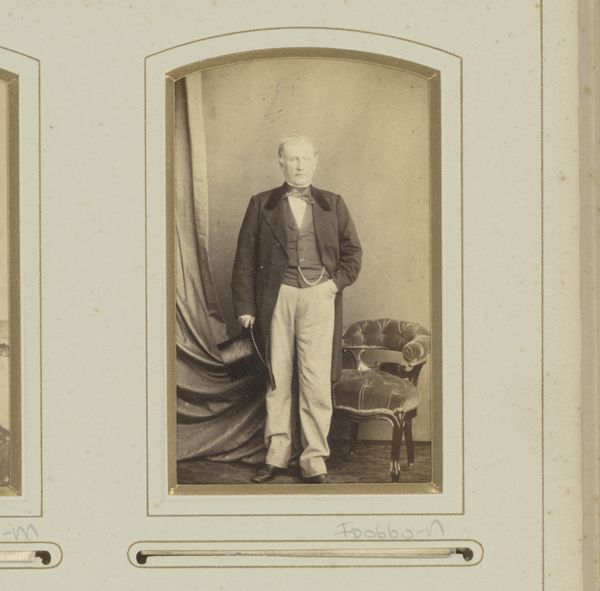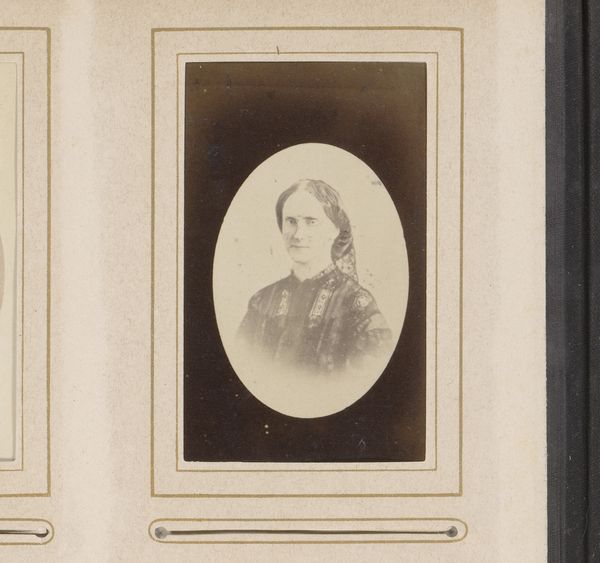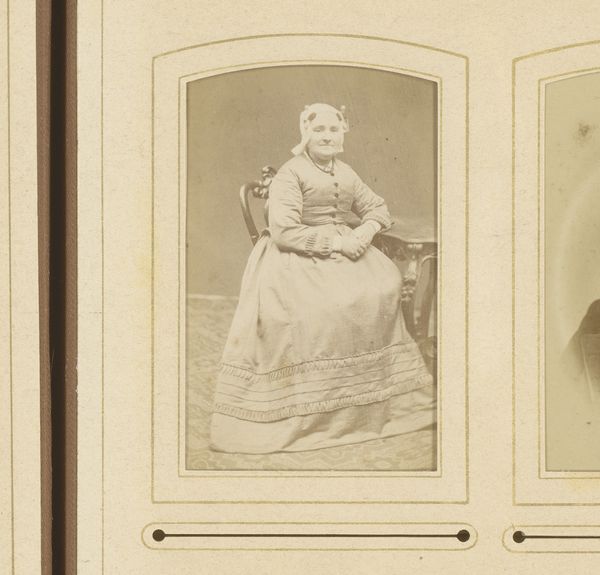
Standbeeld van koning Willem II op het Buitenhof in Den Haag 1857 - 1870
0:00
0:00
Dimensions: height 86 mm, width 174 mm
Copyright: Rijks Museum: Open Domain
Curator: This striking photographic print captures the statue of King William II at the Buitenhof in The Hague, likely taken between 1857 and 1870. The anonymous photographer presents the bronze sculpture in a way that is both documentary and subtly reverential. Editor: There's a formality to the composition, a stateliness fitting for the subject, of course, but also quite isolating. The fencing creates a clear division between the public and this idealized version of power. It feels designed to awe, doesn’t it? Curator: The photograph encapsulates the ideals of neoclassicism in sculpture; observe how William II is presented—his attire is classical yet militaristic, his posture commanding. These symbols collectively build the cultural memory of a strong, decisive leader. Editor: Yet, looking closer, I can't help but consider the colonial context—this "decisive" leadership, the legacy of Dutch colonialism and the inequalities it enforced. Who gets memorialized in public spaces, and at what cost? It’s a question worth asking. Curator: Absolutely. That questioning is critical. What endures, though, is the visual language being deployed. The statue, as captured here, borrows imagery from antiquity, associating William II with those powerful and lasting icons, ensuring a level of enduring recognition. Editor: But those choices also construct a specific narrative of kingship, right? One tied to a romanticized past. A powerful tool in solidifying an imagined community, while actively excluding those who didn't benefit from his rule. This image, then, freezes a complex historical tension. Curator: It’s fascinating how much a single photograph, seemingly simple in its documentation, can reveal about cultural aspirations and enduring power structures, regardless of intention. Thank you for this critical lens. Editor: And thank you for pointing out the embedded visual symbolism and how it resonates through history. This conversation reminds us to both admire and interrogate what these monuments represent.
Comments
No comments
Be the first to comment and join the conversation on the ultimate creative platform.
